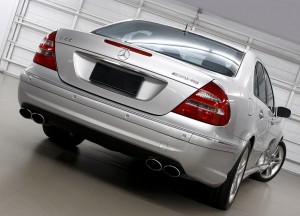Over the last few weeks I have been working on my little Honda Insight. I’ve been installing a turbo, water/air intercooler system and a new airbox, the latter fabricated from scratch.
It’s a complex job in that there’s not much space – especially when I am deliberating oversizing everything (but the turbo) to improve volumetric efficiency.
I am also doing things in a significantly different way to the approach I’ve used previously.
So what’s different then?
Specifically, I am being very careful that each newly-placed nut or bolt can be easily accessed by a tool. This means that instead of just looking at aspects like strength, weight and functionality, I am adding another criterion – can I get a spanner (easily) on that bolt?
It might seem a kinda obvious thing to do but I must admit I have never much done this in the past. In fact, I remember working on my little Daihatsu Handi turbo, way back around 20 years ago. The water/air intercooler I first installed on that car was so tight for space that the nuts had to be placed on bolts using long-handled, long-nose pliers. Yes, both long-nose and long-handled!
It was like performing surgery.
I got so jack of it that in the end I removed that intercooler heat exchanger and fitted another that sat on top of the engine rocker cover, in clear view – and with clear access.
The trickiest job so far on the Honda has also involved a water/air heat exchanger core, the one that sits on a fabricated steel frame bolted to the top of the gearbox, next to the engine.
The intercooler bolts to the frame via three rubber mounts. I need to (1) gain access to the frame’s mounts to bolt it to the gearbox, and then (2) gain access to both ends of the rubber feet, and (3) gain access to the bolts that hold little (extra) brackets to the intercooler core itself.
So far I am JUST successful: the rear bolts for the intercooler rubber mounts, positioned partly under the windscreen in the deeply indented firewall, can be accessed by using a short 12mm spanner – not a ratchet spanner as it looks may be needed, but a conventional spanner. The other fasteners are all easily accessible.
Another tricky job were the mounts for the airbox. A long cylindrical design mounted at an angle to the horizontal, it also sits on the gearbox. By manipulating the bracket design until it was all ‘just so’, I am able to access all three mounting bolts using a long extension on my small socket set.
Importantly, making a design that allowed access to these points was almost the first step in the process – I didn’t position the airbox solely for plumbing access to the turbo. Had I done this, the bolts holding the airbox in position would have been ‘blind’, and furthermore, would have needed tiny hands to even get to them.
And I have to say, positioning the fasteners for good access has made it so much easier to work on the car. That’s especially noticeable when some items, like the airbox, have been on and off perhaps 50 times while the intercooler water hoses have been routed and then fastened into place, and then the intercooler-to-throttle-body tube has been fabricated (twice!).
So for me no more the bad habits of the past: now everything I install has to be easy to work on, no matter how small the space into which it must fit.

 Julian Edgar, 50, has been writing about car modification and automotive technology for nearly 25 years. He has owned cars with two, three, four, five, six and eight cylinders; single turbo, twin turbo, supercharged, diesel and hybrid electric drivelines. He lists his transport interests as turbocharging, aerodynamics, suspension design and human-powered vehicles.
Julian Edgar, 50, has been writing about car modification and automotive technology for nearly 25 years. He has owned cars with two, three, four, five, six and eight cylinders; single turbo, twin turbo, supercharged, diesel and hybrid electric drivelines. He lists his transport interests as turbocharging, aerodynamics, suspension design and human-powered vehicles.


